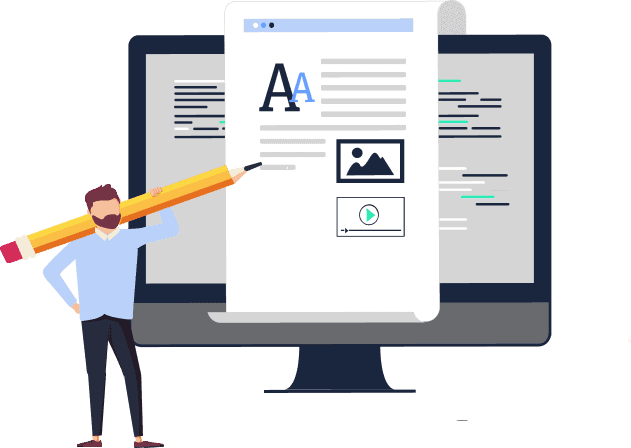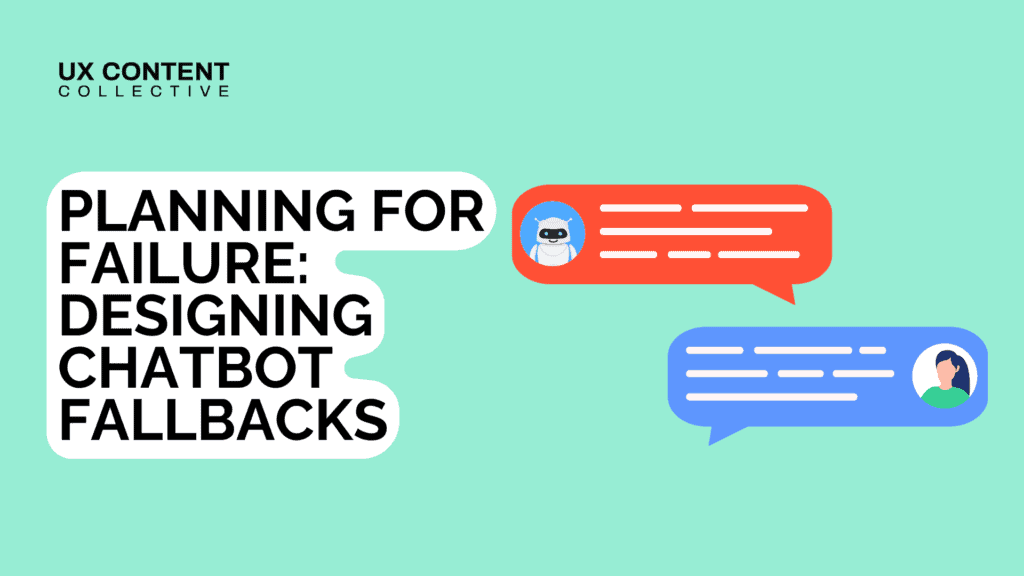
The ultimate content design resources list (2025 edition)

Patrick Stafford

Interested in UX writing and content design?
Explore our content design and UX writing training:

Interested in content design? Check out our complete guide to content design (and how it’s different from UX writing).
It’s been another fantastic year for the UX content industry. We’ve seen a huge number of blogs, resources, and other materials – and they’re all free. Each year, we take the 50 most popular links from our weekly Dash newsletter and compile them into a handy list – the top 50 content design and UX writing resources of 2024!
Enjoy!
50. Stop taking content work personally. Is your ego getting in the way? Deiadora Blanche (Airbnb, Coursera) talks on Writers of Silicon Valley about how to make sure your UX content career doesn’t become derailed by attachment.
49. Six human skills that will future-proof your design career. Samantha Warren writes for Adobe about the traits that will help secure your future in design, even in the face of AI and automation technology.
48. Enhancing error messages for a smoother ride app experience. We love a good case study. Idil Duzgun writes how she and the team at DeliveryHero analyzed and then created a better, more robust system for error messages that actually help users.
47. How content docs can solve tricky content design challenges. Sometimes it’s good to go old-school. Aly Higgins writes how content docs can help teams collaborate – and how she and team at the University of Arizona Libraries used them to navigate a particularly complex project.
46. The future of content design is different than what you think. This year has seen a huge rise in conversation about the future of content design, given everything that’s happening in AI. Rupak Bid posts his thoughts on what’s happening – in short, you’re likely to see teams shrink but their impact increase.
45. Basic design principles for AI. Everyone is sort of stumbling their way through the darkness with artificial intelligence. This website brings together some key principles and instructions for designers when working on AI projects, and there’s plenty there for UX writers and content designers to learn too.
44. I will fucking piledrive you if you mention AI again. This essay by Nik Suresh highlights the problems with so much of the AI discussion in 2024 – it’s all based on hype. He breaks down why so much of the chatter is hyperbole, and what smart designers and tech workers actually need to understand about this technology.
43. The content design job market is recovering. Earlier this year, we posted a little wrap-up of the hiring that’s starting to pick up after several layoffs during 2022 and 2023. It’s good to see that trend continuing!
42. Roxanna Font: from book editing to leading Apple’s UX writing. There are so many wonderful personalities in the UX content industry. This interview from Punkt highlights Roxanna Font, who now leads UX writing at the world’s largest tech company. A lot of great wisdom here.
41. Designing content for people with limited English. The Gov.uk folks are always publishing wonderful resources. This blog highlights different strategies for designing experiences for a wide variety of language skills.
40. Product vs content with Scott Kubie. Should UX writers and content designers think more like product managers, or should product managers adopt better writing skills? Should it be both? Scott Kubie appears on Writers of Silicon Valley with Patrick Stafford to debate product vs content.
39. Improve your strategic thinking skills. Jess Eddy explains why strategic thinking is one of the best skills designers can adopt, and focuses on the six disciplines of strategic thinking: pattern recognition, systems analysis, mental agility, structured problem-solving, visioning, and political savvy.
38. A personal story on designers vs deciders. Which one are you? Scott Berkun explores why making better decisions is a very different skill than being a good designer, and suggests how you might be able to improve both.
37. What does a senior content designer do all day? A good question! Emma Aldington takes us through a day in the life of her work – a good resource to show someone when they’re curious about your job.
36. A survey of product teams reveals the value of content design. Melanie Seibert surveyed over 60 people from Indeed, and found that on average, teams delivered higher-quality solutions when they partnered with a content designer.
35. The biggest challenges facing UX content experts. The UX Content Collective surveyed over 80 content designers earlier this year to discover what their biggest challenges, hopes, and other thoughts are on the industry this year.
34. A Q&A with the Apple UX writing team. Apple is one of the most secretive tech companies, so it’s nice to see them pull the curtain back a little on their design practices. Settle in for a great read with the team about how they work with product and explain technical concepts in simple ways.
33. 3 experiments: creating a copy single source of truth. Clare Scott participated in a hackathon and explored a better way to manage her company’s copy, comparing Ditto, Figma, and Frontitude. Some great thoughts here for any companies considering the same.
32. Analyzing the content design behind Netflix categorization. Think back to the days of video rentals: so much of the experience was about browsing the shelves. Now, in the age of Netflix, that joy is gone. Can we bring it back? Erin Schroeder explores the content design behind Netflix and why personalization doesn’t always work.
31. The top 10 design books. Pretty self-explanatory. Christopher Butler puts together a nice list of great design books – including one great classic on UX content.
30. Structured content in the age of AI. There are a lot of promises behind the potential of AI, but ask any content expert and they’ll tell you – it’s structured content that makes it all possible. Carrie Hane explores why structured content is so critical.

29. Hey product – it’s time to embrace UX writers. Couldn’t have said it better ourselves. Kate Lawton from the CarMax experience design team shares how product can help bring content closer into the design experience.
28. Content design (or lack thereof) in USDA BrucePac listeria recall communications. Not the first thing you think of when talking about food recalls, but Scott Kubie breaks down how content design principles can help make these communications better – or worse.
27. The case against consistency. Read any style guide and you’ll see rules for making sure content stays consistent. But should it always be that way? TJ Lee explains why there are perfectly reasonable reasons to expect inconsistency.
26. The impact of empathy on microcopy. Empathy is one of the most fundamental principles of UX design. Corey Anderson shares how empathy can impact even the most seemingly benign pieces of UX text.
25. The hitchhiker’s guide to release notes. While release notes may not always be in the purview of a UX writer or content designer, they’re still a great place to engage users and increase retention. This is a great guide on how to improve yours.
24. Integrating UX content into design systems. The future of content impact will be found in creating the systems and processes that guide content at scale. Frontitude published a great guide on how to integrate content guidelines into design systems while considering AI.
23. Why the UX job market sucks and what to do about it. It’s true, although 2024 was an improvement the UX job market is still in recovery mode. Jared Spool explores why in this online webinar and gives several strategies for standing out.
22. Incorporating copy into a design system. Do you sense a theme in this year’s articles? More emphasis on guiding content at scale. In any case, André Carmo published a wonderful guide on how to incorporate copy into a design system.
21. Creating a content design portfolio with no experience. By far, one of the most common questions entrants to the UX content industry have is: how can I create a portfolio? Emily Wachowiak gives some wonderful advice on how to translate your experience – or lack thereof – into a portfolio.
20. Content design and AI: a beginning, not the end. Config is always a good time. Listen to Ryan Reid, UX writer at Figma, talk about the emergence of AI tools and their impact on content design.
19. Design is an activity of research. Research isn’t just a box that needs to be ticked. Ha Phan explores how you can more tightly integrate research into the process of design.
18. Create a content writing system from scratch. This one will be good for the solo practitioners. Struggling on how to start your content system? Miguel Robledo has you covered.
17. Keen to become part of a content leadership community? Kate Agena debuted the Content Design Leaders group this year. Check it out.
16. Lessons learned from content experiments with AI. It’s one thing to think about creating content with AI, but what’s it like to actually experiment with them? Dan Onken details how his team explored the use of AI-driven content in the design and testing process.
15. The obsession over craft. Designers talk about “craft” a lot, but what does it actually mean? David Hoang explores why design is about consistency – and why consistency builds trust.
14. The practice of content strategy resources. Scott Kubie has an excellent list of comprehensive resources here for learning about content strategy. If you want to spend your free time reading, there’s enough here to keep you satisfied for a long time.
13. Content design apology tours must end. We love a spicy take here. Laurah Mwirichia published her thesis on why the industry needs to stop apologizing for itself – and find allies instead.
12. Proactively preparing to write case studies. Ever come to put together a portfolio and think, “where did all my work go?” Well, Mara Lantz has you covered. She writes a fantastic guide on how to make sure you proactively capture, store, and organize your work so your portfolio process runs a lot smoother.
11. AI-powered content organization strategies. Jorge Arango’s entire collection of work is worth reading, but this particular blog especially so. He explores how categorizing and organizing content will be the differentiating factor for the quality in so many AI experiences.
10. Presenting content design work to non-writers. Ever struggled with presenting your work to a non-writing audience? Delfina Hoxha has a wonderful take on how to do just that.
9. Phrases that have messed up my expectations of content design. Nicole Michaelis reflects on some of the more common utterings of our industry – “seat at the table” being one of them – and explains why these have made her outlook a little unbalanced.
8. 4 ways to use generative AI in UX writing. Talking about AI is easy. But how do you actually do the work? James McGrath explores 4 distinct ways you can bring generative AI into your day-to-day.
7. Content design 3.0: a roadmap for UX content professionals. The content design industry has reached something of an inflection point. What’s going to happen next? Patrick Stafford debuts his Content Design 3.0 framework – a way for understanding how the industry is changing and where it might go next.
6. Mobile app UX trends. It feels like UX best practices have remained stale for a while, so this piece from Baymard is a good reminder that, no, things are changing all the time and you should keep on top of them.
5. How UserTesting does user testing on UserTesting. User testing inception. Jason Giles describes how the research platform does research on itself. Is that like doing surgery on yourself? Who knows – but the video is worth watching.
4. Unlocking extra hours for drivers through content design. Delfina Hoxha provides a detailed and thorough breakdown about how she approached redesigning a Google Maps flow. Short, simple, and impactful.
3. Hack to the future – AI and content design. Marianne Knowles explores how content design can impact the future of AI in this excellent, detailed presentation.
2. A formula for designing maximum character lengths. Stefano Romanelli published a clever way to figure out what the maximum number of characters should be for a CTA, and even created a web app! Definitely worth having in your toolkit.
1. A guide to designing errors for workflow automation platforms. A wonderful, technical deep-dive into how you can make error messages better for B2B products, specifically for automation tools that dominate so much day-to-day work. Rucha Abhyankar cooks on this one!



